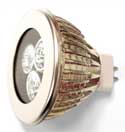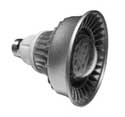|

Product Links 
|
|

Inside SRI

|
| SRI-Newsletter |
 |
Subscribe to our newsletter to receive monthly specials, manufacturer's feature, and electronics news via email. |
|
 |
|
See Our latest release of SRI-Newsletter here
 |
|
View Our List of Archived Newsletter Articles
 |
|

SRI Links

|
|
Visit our Sister Site,

Distributor of
Industrial Products
| |
|
Web Search ..
Powered by;

|
|
 |
 |
|
 |
 |
We have already seen LEDs used in traffic lights, signs, buses, cars – all around us. More and more, LEDs will also make their way into our homes, and this is happening faster than experts predicted a few years ago. According to the New York Times, incentives like grants and other money for “green” infrastructure offered by Congress and rebates from utility companies could increase this pace. The key is to break through some of the barriers of LED technology like the color of the light, the directional nature, and the cost. Advances in LED technology occur almost monthly, so many of these barriers will be a thing of the past soon.
The key is not to rush this technology as was done with compact fluorescent technology where many poor-performing products slowed the growth. According to cnet, The Federal Trade Commission last Wednesday brought a suit against an LED bulb manufacturer, Lights of America, for exaggerating the light output and expected life of its LED bulbs. Many manufacturers claimed life of 100,000 hours, which now is a more realistic 30-50 thousand hours. Another barrier is that bulbs need to fit in existing sockets and lamps as incandescent bulbs - a mistake learned by CFL manufacturers. Light quality needs to be a huge concern too as many consumers to not like the perceived coldness of the light.
 Many manufacturers now offer LED bulbs that screw into a standard light socket or fit onto track lighting. These bulbs use less electricity than even a fluorescent bulb that produces the same amount of light. Many of these lights have been directional in nature which makes them ideal for overhead or spot lights, while some have domes to spread the light out more. The compact size and full dimming ability makes them preferable over fluorescent lights for accent lighting. Contrary to the belief that LEDs don’t give off any heat, many of these lights have heat sinks at the base to dissipate the heat they produce. This is because unlike an incandescent bulb which radiates heat from the bulb, LED bulbs need an apparatus to remove the heat from the base. Many manufacturers now offer LED bulbs that screw into a standard light socket or fit onto track lighting. These bulbs use less electricity than even a fluorescent bulb that produces the same amount of light. Many of these lights have been directional in nature which makes them ideal for overhead or spot lights, while some have domes to spread the light out more. The compact size and full dimming ability makes them preferable over fluorescent lights for accent lighting. Contrary to the belief that LEDs don’t give off any heat, many of these lights have heat sinks at the base to dissipate the heat they produce. This is because unlike an incandescent bulb which radiates heat from the bulb, LED bulbs need an apparatus to remove the heat from the base.
 LEDs may also be a healthier alternative too. According to Vocus, “When considering general lighting features that may affect health, like flicker, hum, burnout, heat and toxic materials, LEDs come out ahead of the competition every time.” LEDs may also be a healthier alternative too. According to Vocus, “When considering general lighting features that may affect health, like flicker, hum, burnout, heat and toxic materials, LEDs come out ahead of the competition every time.”
The best part of LED lighting is the fact that the cost has come way down – especially considering the long-term cost savings. According to cnet prices are projected to fall steadily as manufacturing yields improve, much as prices fell over time for chips, flat-screen TVs, and other high-tech gear.
Sources
http://www.ledsmagazine.com/
http://news.cnet.com/8301-11128_3-20016005-54.html
http://news.cnet.com/8301-11128_3-20016005-54.html#ixzz0zVoMeHbx
http://www.prweb.com/releases/led/lighting/prweb4484664.htm
http://patmullins.com/ledlightmyths.html#toc2
http://apps1.eere.energy.gov/buildings/publications/pdfs/ssl/cfl_lessons_learned_web.pdf
|
| |
**Specifications subject to changes**
|
|
 |
|

Product Spotlight
 |
|

Sponsored Ads
 |
|